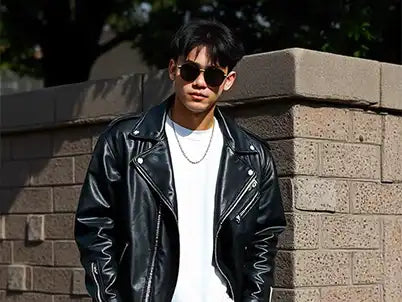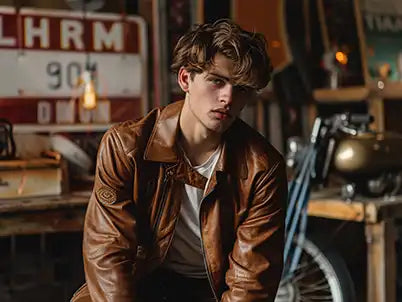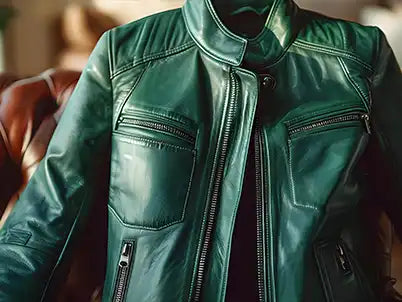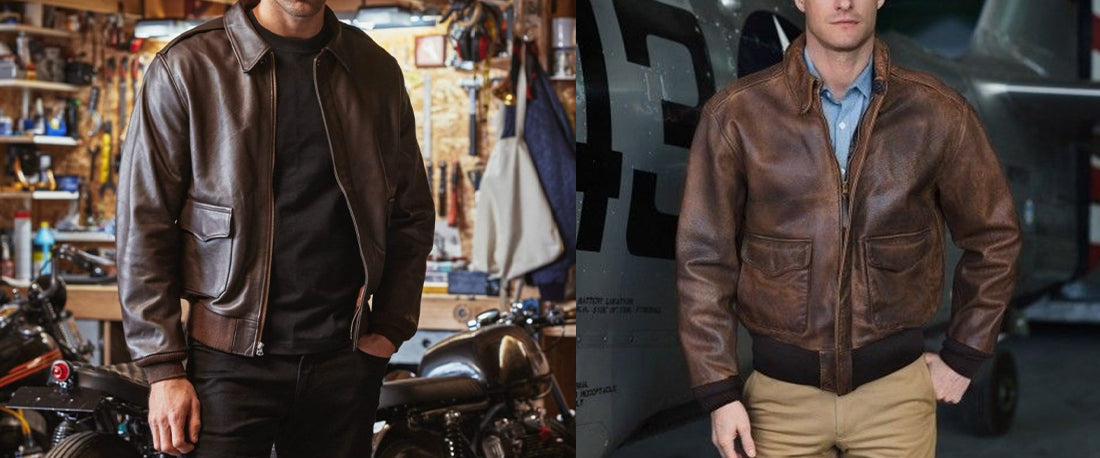There aren’t many jackets that carry as much story as the bomber. Ask around, and most people know it as a cool fashion piece, but originally, it had nothing to do with fashion. The bomber jacket started out as gear for pilots, built to survive icy skies and open cockpits. Fast-forward a hundred years, and it’s part of everyday style, from casual outfits to luxury runways.
If you’ve ever looked at men’s bomber jackets, you know they’re versatile. Some are rugged and heavy, others are slim and sleek, but all of them owe their existence to military roots. Let’s go back in time and see how this jacket came to be, how it’s changed, and why it’s still one of the most loved outerwear styles today.
What Is a Bomber Jacket in Fashion?

So, what is a bomber jacket in fashion terms? It’s a waist-length jacket, usually with a zipper, ribbed cuffs and hem, and often a warm lining. Think of it as a blend of practicality and style.
Today, you’ll find them in leather, nylon, even suede. Some keep it classic; others experiment with oversized cuts or modern trims. Whether you’re going for laid-back or sharp, there’s a bomber that works. But it wasn’t always this way; it all started in the trenches of history.
Bomber Jackets WWI & WWII

In World War I, pilots flew open-cockpit planes at freezing heights. Regular coats weren’t enough, so the military issued leather flight jackets with fur linings. They were bulky but lifesaving.
By WWII, things got more refined. The WW2 bomber jacket, originally better known as the A-2, became standard. When we talk about bomber jackets, WWI & WWII, it’s these designs that defined the look: leather shells, ribbed cuffs, and that cropped cut for mobility. They weren’t fashion pieces then, but they sure laid the blueprint for what came after.
Origins of the Leather Bomber Jacket

The origins of leather bomber jacket design go back to 1917, when the U.S. Army Aviation Clothing Board introduced them. Leather was chosen because it was thick and durable. Unlike wool or cotton, it offered wind resistance and held up to rough conditions.
That choice stuck. Even when newer versions later switched to nylon, the association between bombers and leather never went away.
A-2 Jacket History

Now let’s talk about the A-2. Introduced in the early 1930s, it’s probably the most iconic of all bomber types. A-2 jacket history ties directly to the U.S. Air Force, with versions made from horsehide or cowhide.
Pilots often customized them with patches and artwork. You’d see pin-up girls, squadron logos, even battle records painted on the backs. That habit of personalization added a cultural layer to the bomber that carried into civilian life.
Bomber Jacket History: From Cockpit to Street

Here’s where things shift. After the war, soldiers came home still wearing their jackets. Civilians noticed. The rugged style and association with heroism caught on. Bomber jacket history took a leap from military to mainstream.
By the 1950s, it was more than clothing—it was rebellion. Movies like Rebel Without a Cause made leather bombers cool. By the 70s and 80s, they had crossed into music scenes—rock, punk, hip hop. That’s the bomber jacket evolution right there: from function to fashion to cultural symbol.
When Were Bomber Jackets Popular?

If you’re wondering, when were bomber jackets popular? The honest answer: always. But if we had to pick peaks:
- 1940s–50s: Postwar pride.
- 70s–80s: Punk and subculture fashion.
- 90s: Hollywood and grunge revival.
- 2000s–today: Streetwear and high fashion adoption.
Flight Jacket Heritage

Part of the charm is the flight jacket heritage. These aren’t just jackets; they’re reminders of aviation history. They were worn in combat, passed down by veterans, and kept alive through generations. That heritage adds weight. Put one on and it feels more than just stylish—it feels connected.
Iconic Bomber Jacket Design Elements

What makes a bomber instantly recognizable? These iconic bomber jacket design elements:
- Ribbed cuffs and waistband to keep warmth in.
- Front zipper closure, easy and fast.
- Pockets are angled for practical use.
- Waist-length cut that moves with you.
You can change materials or colors, but if you remove these details, it’s no longer a true bomber.
Vintage Bomber Styles

Collectors love vintage bomber styles. Old A-2s, B-3 shearling bombers, or G-1 Navy jackets are prized pieces. Some still carry hand-painted art or squadron patches, giving them soul.
Slip into a vintage bomber and you’ll notice the difference. The leather feels heavier, the lining thicker, the cut boxier. Honestly, that kind of wear and tear tells stories new jackets can’t replicate.
Bomber Jacket Evolution

Over the years, the bomber jacket evolution followed the times. In WWII, they were rugged leather. By the Vietnam era, nylon MA-1 bombers were common—lighter, more practical. In the late 20th century, designers reimagined them in high fashion.
Now, you’ll find bombers in everything from luxury lambskin to eco-friendly synthetics. The core silhouette never changed, but the materials and moods did.
Bomber Jacket vs Varsity Jacket

People sometimes confuse bombers with varsity jackets, and they don’t know the difference between a bomber and a varsity jacket. In reality, the difference is that varsity jackets usually have wool bodies, leather sleeves, and letter patches—originating from sports culture. Bombers, however, trace back to aviation. Different roots, different vibes. One screams college pride, the other rebellion and grit.
Styles of Leather Bomber Jackets

Modern bombers come in all sorts of variations. When exploring styles of leather bomber jackets, you’ll find:
- Shearling-lined for winter warmth.
- Lambskin versions for sleek nights out.
- Vintage replicas for history fans.
- Minimalist suede for fashion-forward looks.
Bomber Jacket Fit

Fit makes or breaks it. A proper bomber jacket fit should hug the shoulders, stop at the waist, and have sleeves that end at the wrist. Too loose, and it looks sloppy. Too tight, and it loses comfort. Personally, I like mine slightly snug at the waist, and it keeps the shape without feeling restrictive.




















